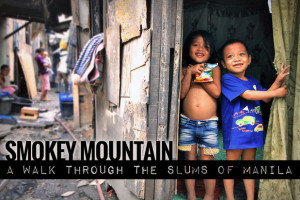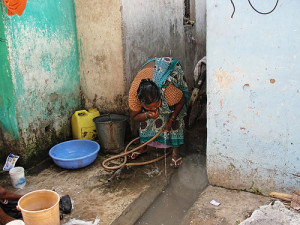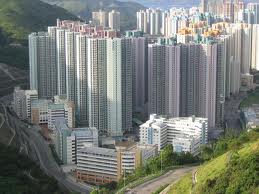SA Affordable Housing
 SA Affordable Housing is a unique publication that is dedicated entirely to the subject of affordable housing in South Africa today. We address topics and issues relating directly to rural and urban infrastructure planning and development and the delivery of affordable housing. SA Affordable Housing does not support any view that lends itself to the construction of new shacks and slums.
SA Affordable Housing is a unique publication that is dedicated entirely to the subject of affordable housing in South Africa today. We address topics and issues relating directly to rural and urban infrastructure planning and development and the delivery of affordable housing. SA Affordable Housing does not support any view that lends itself to the construction of new shacks and slums.
This publication is grounded in the absolute conviction that every South African must have access to a home and that these homes, and the infrastructure that supports them, must be of a standard that is reflective of the needs and dignity of our citizens.
Read more: http://www.trademax.co.za/saah.html
Louise Scholtz On The Lack Of Social Housing In South Africa
Urban land is of symbolic significance in South Africa because it is land that people of colour were historically denied access to. But the historically privileged still own, occupy and enjoy the best urban land.
The question is, why hasn’t our government been able to unlock well-located land in urban areas to provide housing for the people who need it most?
The historically disadvantaged continue to live on marginal land on the peripheries of South Africa’s cities and the apartheid city remains untransformed.
Both The South African Civil Society Information Service (SACSIS) and the Friedrich Ebert Stiftung South Africa Office (FES) wish to promote discussion about the transformation of the apartheid landscape in an effort to foster social cohesion in South Africa’s still largely racially and economically segregated society. The organisations co-hosted a panel discussion to interrogate the issue on 17 April 2014.
The event was opened by Renate Tenbusch, Resident Director of the FES South Africa office and the panellists who spoke at the event included, Mark Napier: Principal Researcher at the Built Environment Unit of the CSIR and co-author of the book, “Trading Places: accessing land in African cities”; Thembani Jerome Ngongoma: Member of Executive Committee of Abahlali baseMjondolo (shack dwellers’ movement); Louise Scholtz: Manager at World Wildlife Fund South Africa and leader on joint project with National Association of Social Housing Institutions; and Kate Tissington: Senior Researcher at the Socio-Economic Rights Institute of South Africa.
Overall, as a result of the contributions of this panel as well as questions and comments from the floor, it became clear that there is stasis, a lack of imagination and a lack of political will to house the poor and to transform South Africa’s apartheid cities. Much of this is happening within a highly corporatized free market environment where municipalities would rather sell off their land for short-term profit than invest in the long-term sustainability of their cities for inhabitants and future generations. Rent collection and maintenance of rental housing stock are activities that South African municipalities simply do not want to burden themselves with.
Talking about the availability of rental and social housing stock in South African cities, Louise Scholtz argued that there is a worldwide trend towards home ownership, which is affecting the availability of rental stock negatively.
In South Africa, municipalities have sold off much of their rental stock because they are unable to manage their housing stock. However, rental housing is important in South Africa because it provides flexible options to people, and in this country where people are employed in elementary occupations, they need that flexibility to move to where the jobs are.
Scholtz said that it was difficult to determine exactly what rental stock government owns because it is scattered across departments and nobody is accountable or takes ownership of the issue.
The creation of rental or social housing stock provides an opportunity to restructure and reconfigure the apartheid city and address historic inequalities, she concluded.
Sabrina Iovino – Smokey Mountain: A Walk Trough The Slums Of Manila, Philippines
 justonewayticket.com. May, 2014. Smokey Mountain is a world you rather don’t want to see. In Manila’s largest dumpsite the poorest of the poor are making their livelihood by picking up garbage.
justonewayticket.com. May, 2014. Smokey Mountain is a world you rather don’t want to see. In Manila’s largest dumpsite the poorest of the poor are making their livelihood by picking up garbage.
See more: http://www.justonewayticket.com/smokey-mountain
Makarand Purohit – Will The Rs. 392 Crore Fund Help Raipur’s Growing Slums?
indiawaterportal.org. May, 2014. A report on the status of Raipur’s many slums released in February 2014 shows that providing basic amenities to slum dwellers is still a challenging task for the Chhattisgarh government.
“The life of the people living in slums in any part of the country is a curse”, says Rohit Jagat, a 30 year old resident of Shakti Nagar slum in Raipur.
Raipur, the capital of Chhattisgarh, is regarded as one of the major growth centres in the country. With rapid urbanization and industrialization in and around Raipur, the population of the city increased drastically. Sadly, this also included the slum population, which was 97,264 in 1991 and rose to 5,16,829 in 2011. This growth has led to an increase in the demand for water and better sanitation facilities but the efforts made by the government in this regard seem poor especially around the slums.
Read more: http://www.indiawaterportal.org/raipur-slums-poor-water-sanitation
Xuemei Bai, Peijun Shi& Yansui Liu – Society: Realizing China’s Urban Dream
China is urbanizing at an unprecedented rate. It is perhaps the greatest human-resettlement experiment in history. Between 1978 and 2012, the fraction of the nation’s population dwelling in cities increased from 17.9% to 52.6%. If the current trend holds, China’s urban population could top 1 billion people in the next two decades.
These are uncharted waters, but China has a plan. In March, the government released the National New-type Urbanization Plan, which sets targets for China’s urban population fraction to rise by 1% a year to reach 60% by 2020.
The plan is comprehensive and ambitious. It covers almost every conceivable aspect of urbanization, from rural–urban migration and integration to the spatial distribution of and linkages between cities; sustainable development; institutional arrangements; and implementation. It sets numerical goals and as a guiding principle emphasizes a sustainable and people-centred approach, paying more attention to welfare and well-being — a significant and positive shift from the current economic focus on land development. It also aims to rectify existing problems associated with the rapid urbanization in the past three decades.
The right national strategy is necessary. But it is not sufficient. It is local practices that will make or break China’s urbanization plan.
Read more: http://www.nature.com/news/society-realizing-china-s-urban-dream-1.15151
Belinda Jack ~ What Is Reading
Neuroscience is beginning to explore what happens when we read by monitoring the areas of the brain that are stimulated while we read. Do these findings matter to the Humanities? Is there neurological evidence that the brain responds differently to ‘good’ and ‘bad’ writing? How we read clichés will be examined, as well as what the experience of re-reading tells us about reading first time round?
The transcript and downloadable versions of the lecture are available from the Gresham College website:
http://www.gresham.ac.uk/lectures
Gresham College has been giving free public lectures since 1597. This tradition continues today with all of our five or so public lectures a week being made available for free download from our website. There are currently over 1,500 lectures free to access or download from the website.
Website: http://www.gresham.ac.uk
Twitter: http://twitter.com/GreshamCollege
Facebook: https://www.facebook.com/greshamcollege




